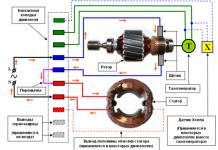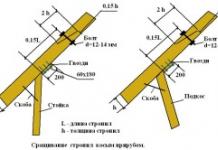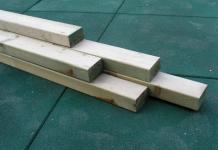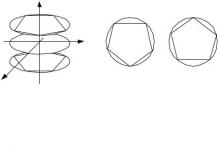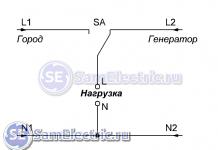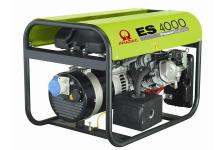The need for proper installation of heating radiators arises both when replacing a single device and when installing the entire system. It is the latter option that is reasonable to consider in detail and in detail.
The heating season in our country lasts at least six months, so a lot depends on the heat circulation system: not only the comfort of living quarters, but also human health, heating costs and the relevance of its repair. Let's consider the main schemes for supplying heat to apartments and residential buildings:
- Cast iron radiators. Massive classic devices, “guests from the past.” They are used on a residual basis and are no longer produced by modern industry. They are characterized by low heat transfer and an appearance that has to be decorated - curtains, slats, etc. Which further reduces the circulation of warm air in the room;
- Aluminum sectional radiators. Lightweight, reliable and efficient devices for the heating system. Approximately 50% of the coolant energy comes from convection into the room (for cast iron analogues this figure barely reaches 25%). Equipped with convenient pressure/flow regulators and an attractive design;
- Steel sectional radiators are very similar in appearance to aluminum ones - but at the same time they are much more massive and somewhat more expensive in terms of price. The main advantage of the design of steel heating devices is their high resistance to corrosion. If the water in the heating system is hard and contains acidic or alkaline impurities, it is wise to choose such batteries. The installation of steel heating radiators must take into account their significant weight;
- Bimetallic radiators - have the best performance characteristics and the highest cost (about 20% higher than aluminum sections). They withstand high pressure in the system, operate in the range from 20 to 40 atmospheres. All other varieties described above can operate at a water pressure in the system of 15–25 atmospheres.

The standard service life of bimetallic radiators is up to 25 years, steel and aluminum - at least 20 years. In reality, they can last up to half a century. Of course, under the obvious condition - if the system is selected and connected correctly.
When replacing a single heating device (for example, the cast iron sections are leaky), it is important to pay attention to the center distance, hole diameter and thread pitch. It is best to measure these parameters with a tape measure and calipers. There are many types of heating devices on the market and in stores, their design features differ from each other. You can purchase a device that looks like a failed battery, but it will not work during installation.
When the entire system is changed, or heating is installed anew (for example, in a new house or apartment), a correctly drawn up project is important:
- For pipes – direct and return – it is best to choose plastic ones with a metal layer, used for hot water supply. In the specifications, the permissible water temperature must exceed the temperature in the system by at least 10 ˚C;
- The best places to install the selected heating radiators are the space under the windows or on one side of long blank walls. This ensures better circulation of warm air in the apartment/house;

- The sectional design of the batteries allows you to vary their length, and therefore the power of the heating system. Correct connection requires the presence of from 6 (minimum) to 15 (maximum) sections per radiator;
- The average standard per 1 square meter of heated room is 0.7–1.1 sections made of aluminum, steel or bimetal. In rooms with an area of more than 15–20 m2, installation is recommended;
- In addition to the main pipes and the batteries themselves, you should stock up on the required number of connecting fittings, angles, brackets and other accessories. To drill holes in ceilings and walls, you will need a hammer drill with a long drill and a special “iron” for welding PVC pipes.

Of course, all installed batteries must be from the same company (and preferably from the same batch). Similar requirements apply to the pipeline system. Let's look at how to install a heating radiator and connect it after installation in more detail.
The site’s site masters have prepared a special calculator for you. You can easily calculate the required number of sections.
Installation and connection of radiators - step-by-step instructions
The installation of new heating radiators should be divided into several stages:
How to install and connect heating radiators with your own hands - step-by-step diagram
Step 1: First things first – batteries!
When installing heating radiators on the wall, the first step is to install the batteries. This is done using two (for more than 10 sections - three) brackets, which are pre-hammered into the wall. The inlet and outlet water pipes are protected with special plugs. It is important to accurately align each radiator both horizontally and relative to the wall. This will not only give the entire system an attractive design, but will also increase the service life of the heating circuit.
The brackets must be able to withstand heavy loads. They are buried into the wall by at least 10 cm. The backlash and vibration of the brackets should be minimal (a few millimeters 20 cm from the wall).
Step 2: Well, and only then the pipes
Some new homes have special holes in the floor slabs for piping systems. If these holes are not available, they are punched with a puncher, with a double reserve in diameter. For example, for two pipes with a diameter of 20 mm, a common hole of at least 50 mm is punched. Pipe cutting is done with a grinder, or for a small amount of work - with a hacksaw.
The placement of pipeline diagrams strictly vertically is a condition for their long and problem-free service. First, the entire riser is welded with an iron, then it is secured to the wall with special clamps. We use a level and a hammer drill (as with the heating radiators themselves). Next, taps are made to the batteries themselves.

The efficiency of its operation depends on where and how the heating battery is installed. If installation rules are not followed, heat loss can reach from 5 to 20%, which will affect the microclimate in the room. To avoid this, you should know the main sources of heat loss and how to properly install a bimetallic heating radiator.
Basic requirements for room insulation
Few people think about why heating radiators are most often installed under windows, and people would be even more surprised to learn that a deviation of 2-3 centimeters can affect the efficiency of their operation. Sometimes heat loss is 20% only because the heater installation parameters were not followed.
Bimetallic radiators today are not only the most expensive on the thermal technology market, but also the most durable, reliable and durable. Therefore, it will be doubly disappointing to invest a lot of money on their purchase and connection and end up with a cold room, the heating of which takes a lot of energy resources.
Since, according to their parameters, bimetallic batteries are ideal for a “not ideal” urban heating network, their positive qualities should be used to the maximum.
Before installing bimetallic heating radiators, heat loss should be minimized:
- Up to 50% of heat escapes through uninsulated walls.
- Windows “eat up” 20%.
- An unheated basement or attic adds 10% of heat loss.
If you do not carry out preliminary work to insulate the room, then even the best-quality heating radiators will not be able to withstand such losses, or the costs of heating it will be too high.
Not all consumers know that simply installing a foil screen behind the radiator will reduce heat loss by 30%. If it is not possible to fully insulate external walls, it is enough to make such a reflector to reduce damage.
Having carried out a complete “audit” of heat losses and eliminated at least some of them, you can begin to calculate how many sections will be required for the room, and where the installation of bimetallic radiators will be carried out.
Choosing a location for the radiator
When the battery is mounted under a window, the laws of physics regarding air circulation are taken into account. They claim that cold air sinks to the floor because it is heavier than warm air. Likewise, the air flow from the window initially goes down, since it is cold, but when heated, it rises. The larger the window, the greater the amount of cold air coming from it, which means that effort and increased energy consumption will be required to heat it.
If the heater is mounted under a window, then the cold flow simply does not have time to spread throughout the room, as it meets the hot air emanating from it. It is important that some rules are followed, which are especially important when installing bimetallic heating radiators with your own hands:
- If there are several windows in the room, then the batteries will have to be installed under each of them. This will reduce heat loss and create proper air flow circulation.
- It is known that 2 radiators with a small number of sections have greater heat transfer than one with numerous elements.
- The distance from the wall to the back of the radiator must be at least 3 cm.
- When attaching bimetallic radiators to the wall under the window, the distance from it to the floor and window sill must be at least 10 cm.
- There should be enough space on the sides of the radiator for easy access to it.
People would be surprised if they knew that deviations up or down affect the quality of the radiator and the amount of heat they produce.
When installing brackets for the battery under the window sill, you should use a plumb line to ensure the structure is horizontal. This will protect the system from the formation of air jams in the future.
Battery installation
Installing a bimetallic radiator with your own hands is not an easy task, as it requires not only attention and tools, but also basic knowledge of the sequence of actions.
- If you plan to connect new batteries to the existing heating system in place of the old ones, then you should first flush the pipes and clean them of rust, scale and debris.
- At the end of the supply pipe, you need to either clean the existing thread, and if it is worn out, then cut a new one and screw tees made of bronze or brass onto it.
- It is necessary to screw ball valves into the straight part of the tee, and connect the rest with a piece of pipe so as to create a bypass.
- Adapters of the appropriate size are installed into the inlet and outlet holes of the battery.
- Prepare and install brackets on the wall, which should be included in the installation kit for the radiator.
- Hang the heating battery on the brackets.
- Install a Mayevsky valve in one of the side holes to bleed air from the system in the future.
- If the type of connection allows, then install a thermostat to regulate the heating of the coolant.
- After the battery is connected to the system pipes, testing should be carried out. To do this, it is necessary to create increased pressure in it. This will allow you to see possible defects in the work and make sure that there is no leakage and the integrity of the entire structure is not compromised.
As can be seen from the above, there is nothing complicated in this work if you do everything sequentially.
Battery wall mount
Before attaching a bimetallic radiator to the wall, you should carefully check that the brackets are installed correctly and securely. The efficiency of the entire system depends on this.
When installing fasteners, you should take into account the weight of the assembled heating battery. Bimetallic radiators are second in heaviest after cast iron ones due to the steel or copper collectors built into them.
Correct placement of the radiator is considered when the brackets are hung in such a way that they provide:
- The distance from it to the wall is at least 5 cm.
- The radiator weighs with a slight forward tilt, which will protect it from the formation of air bubbles.
- The battery plugs must be located at the same level as the heating pipes.
The number of brackets directly depends on the size of the radiator. So for a structure of six sections you will need one fastening at the bottom and two at the top, while for 10 sections you will need 2 on each side.
A properly secured bracket should support the weight of the radiator and not bend under its weight. To achieve this, all fastenings are checked manually. If they move even a millimeter, then it is better to remove the dowels and reinstall them.
Only after the fastenings have been checked can radiators be hung on them and connected to the heating system.
As can be seen from the above, there is nothing difficult in installing bimetallic radiators on your own. The main thing is not to rush anywhere and stick to the sequence of actions.
The creation and repair of a heating system, as a rule, involves the replacement or installation of heating devices. Fortunately, if you wish, you can carry out this work yourself, saving a lot of money. In what order should the installation of heating radiators be carried out, what is necessary to complete the work and what nuances may await during repairs - we will tell you about this in our article.
What do you need for installation?
Installation of any heating radiator does not take place without purchasing certain consumables and using special devices. At the same time, regardless of the type, the set of necessary materials always remains practically identical. The differences are only in small points, for example, larger plugs are used to install a cast iron battery, an automatic air vent is placed above the system, and the Mayevsky tap is not used at all.
Unlike cast iron products, the installation of bimetallic and aluminum heating radiators is carried out in the same way.
As for the placement of steel panel products, the installation procedure has slight differences affecting the moment of hanging the battery. In this case, the kit must include brackets; in addition, on the reverse side there must be metal temples, by means of which the heating device is installed by the hooks of the brackets.
Shut-off valves
During the installation of a heating radiator, a pair of shut-off or ball valves is also required. In the first case, they must be regulated. The products are placed at the output and input of each battery.

Ordinary ball valves are used for emergency repairs to turn off and dismantle the radiator, for example, during the heating season. With this approach, even if something goes wrong during repair, the system will still function without the part being repaired. The main advantage of this solution is the low cost of ball valves. But on the other hand, you deprive yourself of the ability to adjust heat transfer.
Shut-off control valves do almost the same thing, with one exception - they can also adjust the intensity of coolant flow. Of course, here the price will be slightly higher, but this will make it possible to change the heat transfer in the future. In addition, externally, such devices look much better, especially in angular and straight versions. The result is a neater binding.

If necessary, near the ball valve on the coolant supply, you can install thermostat. It is a small element that makes it possible to adjust the heat transfer of the battery. However, if your heating radiator itself does not heat the room well, then you should not install a thermostat! Otherwise, the flow will decrease and the battery will heat up even worse.

Today there are various types of thermostats, from electronic automatic to conventional mechanical. The latter, by the way, are used in homes more often than others.
Stub
When connected sideways, radiators usually have 4 outputs. One of them is covered with a plug, the second is equipped with a Mayevsky tap, the remaining two are allocated for the return and supply pipelines. Like the vast majority of modern heating radiators, the product is usually painted with white enamel, pleasantly complementing the interior of the house.
Automatic air vent or Mayevsky tap
These elements are small devices for releasing air accumulated in the radiator. Installation is carried out on the collector; it is required when using bimetallic and aluminum radiators. The dimensions of the device are significantly smaller than the diameter of the collector, which may require an additional adapter. However, Mayevsky taps are usually supplied with adapters. The only thing that is required from the buyer is to know exactly the diameter of the collector.

As for automatic air vents, they are also installed on radiators. Compared to Mayevsky taps, they have larger dimensions, which is why they are made only of nickel and brass. Over time, air vents can become covered with enamel, spoiling the appearance of the radiator. Based on this, the installation of these elements is not carried out so often.
Additional tools and materials
In addition to the listed elements, for installing and hanging heating radiators you will definitely need brackets and hooks. Moreover, their number will directly depend on the dimensions of the battery itself:
- If the dimensions of the product do not exceed 1.2 meters or the number of sections does not exceed 8, then a pair of fixation points will be sufficient - one at the bottom and one at the top;
- Every next 5-6 sections or 50 centimeters in length require the use of an additional retainer at the bottom and top.
To seal the connections, you will need fum tape, plumbing paste or linen winding.

At the same time, during work you cannot do without dowels, a level and a drill with drill bits. In addition, special equipment will be required to secure fittings and pipes, although this will largely depend on the type of pipe.
Radiator mounting location
It is customary that heating systems are located under the window. This is necessary to cut off cold air from the window with warm air rising upward. You can avoid window fogging due to the dimensions of the heating device, where the width should not exceed 70-75 percent of the window width. During installation, the following parameters must be taken into account:
- The distance from wall to wall should be from 2 to 5 centimeters;
- In the center of the window opening, where the maximum permissible deviation should not exceed 2 cm;
- The gap to the window sill is 10-12 centimeters;
- Between the floor and the radiator - 8-12 centimeters.

Battery installation procedure
Now let's talk about how to properly install heating radiators. The work will be much easier if the surface of the wall behind the battery is as smooth as possible.

The middle of the opening is marked on the site, and a horizontal line is drawn under the window sill at a distance of 10-12 cm. The heating device will be aligned along this line in the future. The brackets should be placed in such a way that the top corresponds to the drawn line, in other words, remains strictly horizontal. This arrangement is acceptable for apartments and systems using forced circulation. Along the coolant flow in systems with natural circulation there is a small slope equal to 1-1.5 percent. These values cannot be exceeded, otherwise stagnation will form.
Floor installation
Typically, heating equipment is installed on walls, but it happens that they are not able to support even light-weight aluminum products. This happens when walls are covered with plasterboard or plastered with lightweight concrete. In these cases, floor installation is used.

Some types of steel and cast iron radiators are initially equipped with legs, but they do not always suit the owners in terms of their characteristics and appearance.
Bimetallic and aluminum products can also be installed on the floor. This provides special brackets, which are fixed to the floor surface. Next, the heating equipment is mounted, and the lower collector is installed on the legs in an arc. The legs themselves come in either a fixed leg or an adjustable one. Depending on the material, fastening can be done using dowels or nails.
Fixing to the wall
Hooks are selected depending on the type of dowels. A hole of the required size is drilled in the wall, where a plastic dowel is subsequently installed. Next, the hook is screwed in. The gap between the heating device and the wall is adjusted with a hook by screwing/unscrewing.

When installing hooks, it is worth considering that most of the load will come to the top of the structure. In this case, the bottom is only needed to hold the system in the desired position. Installation is made 1.5 centimeters below the lower manifold. If this is not done, then in the future the radiator simply will not be able to be hung properly.

The brackets are placed in the place where the installation will take place. For this purpose, the first step is to attach the battery to the wall, after which the points of contact of the brackets are marked. Next, holes are drilled, dowels are driven in and brackets are screwed in. Having placed all the fasteners, the battery is then hung.
Methods for piping heating radiators
Installation of heating systems is carried out with subsequent connection to the pipeline. There are 3 main connection methods:
- Diagonal;
- One-sided;
- Saddle.

When choosing radiators with bottom connections, you don’t have much to choose from. This is due to the fact that each manufacturer himself indicates the supply and installation instructions, which must be followed! Otherwise, there will simply be no heat in the house. When choosing systems with side connections, there are noticeably more installation methods.
Saddle connection
With hidden pipe wiring or bottom wiring, installation using this method is considered less noticeable in the finished result and more convenient.
With a lower single-pipe distribution and a saddle connection, as a rule, 2 methods are used - without a bypass and with it. The taps can be installed without a bypass; if desired, the radiator is dismantled and a temporary jumper is placed between the taps.

Much less often, this type of connection is used for vertical wiring, for example, in risers in multi-story buildings. This is explained increased heat losses, which amount to 12-15 percent.
Diagonal connection
In terms of heat transfer, a diagonal connection of heating radiators is considered the most optimal of all. Heat transfer is considered the largest.

In apartments with vertical risers and a single-pipe system, the finished result is not the most attractive, although many residents still put up with this due to the increased efficiency.
It is important to note that a bypass will again be needed with a single-pipe system!
One way connection
In apartment conditions, a one-way connection is most often used. It can be single-pipe, which is most likely, or double-pipe. Today, metal pipes are most often used in apartments, and therefore it makes sense to examine the method of tying steel pipes. In addition to pipes of the required diameter, installation will also require a pair of tees, ball valves and a drain.

Everything connects. Bypass is considered mandatory when using single pipe system. Using it, it is possible to turn off the radiator without the need to bleed the system. You cannot install a tap on the bypass, otherwise you will block the flow of coolant, greatly upsetting your neighbors. And in this case it will be difficult to get rid of a fine.
Threaded joints are sealed with linen winding or fum tape. Next, paste is applied on top. There is no need to use a lot of winding when screwing the tap into the manifold. If there is a large amount of it, the formation of microcracks cannot be ruled out, which will lead to further damage in the future. This point remains relevant for almost all heating products, not counting cast iron appliances.

The bypass can also be welded if you have the appropriate tools and skills.
With a two-pipe system, a bypass is not necessary. The return is connected at the bottom, the supply at the top.
This type of connection is rarely used when pipes are located at the bottom, for example, when they are laid on the floor. This is due to its not the most attractive appearance. Instead, a diagonal connection is more often used.
A specialist with a capital letter. Minimum words, maximum action. No headaches. Pay the money according to the tariff and sleep well. Replacing batteries in a 2-room apartment. The price was confirmed over the phone using a photo in advance. When we met, I saw that we still needed to make outlets for cold and hot water and a heated towel rail...
in the bathroom. Showed how. The price was immediately agreed upon. Zero advance payment. Including materials. Sergei went and bought everything himself. He himself agreed to turn off the water and heating at the housing office. He came and did everything himself. I also found a leak in the heating riser (an old pipe) and gave me the phone number of plumbers with whom to resolve the issue. I sent a video and photo report upon completion of the work. And now the main thing is that I am in Chelyabinsk and the apartment and Sergei are in Moscow. In order for this to happen, my daughter (studying in Moscow) gave him the key to the apartment in the evening and took it back the next day. Payment by card. Materials on checks. Payment there on the card. And all this only after the work is completed. Miracles and that's all.
Grade 5+Vyacheslav, metro station Pervomayskaya
Order services: Installation of heating radiator.
I am pleased with the quality, and I think that if everyone, like you, approached the problems of citizens of the Russian Federation in the same way, then we would begin to live better. Every action of this man was weighed. As a master and as a specialist, he did everything rationally. I was pleased not only with the quality of the work, but also...
his attitude. Thank you very much to you and your company. You are an example for many companies of how to select employees, how to screen them before submitting applications. I think this is one of the best companies currently on the market, at least when it comes to battery replacement - for sure. I allow you to publish a review, because... I think that this is worthy, correct, reasonable and very effective, so that people are satisfied, and not the way I selected masters until I got to Profi.ru. Here, everything is really clear: it suits you, that means it suits you, and in terms of cost, everything was also clear. If I need anything, I will definitely contact you again.
Grade 5+I wrote a request to replace the batteries, but everything was much more serious. The house is undergoing major renovations and after visiting the neighbors, whose heating in their apartment had already been replaced for free, and who were now waiting for free repairs of some rooms after the replacement, it was decided to make a replacement in their...
apartment on your own. Sergei was explained his scope of work, he agreed, they consulted with him for a long time by phone, he answered all questions. He arrived at the appointed time with an assistant. He has gas welding, which was also important for us. He brought all the tools with him and even replaceable batteries (just in case) and did the job quickly and accurately. I recommend it for difficult tasks. The work is very dusty, cover everything with film if you have a living space
Grade 5+For any type of radiator, there are general rules for placing them in a room. There is also a certain sequence of actions that must be followed. The technology is simple, but there are many nuances.
How to place batteries
First of all, recommendations concern the installation location. Most often, heating devices are installed where heat loss is the most significant. And first of all these are windows. Even with modern energy-saving double-glazed windows, it is in these places that the most heat is lost. What can we say about old wooden frames?
If there is no radiator under the window, then the cold air descends along the wall and spreads along the floor. The situation is changed by installing a battery: warm air, rising upward, prevents cold air from “draining” onto the floor. It must be remembered that in order for such protection to be effective, the radiator must occupy at least 70% of the width of the window. This norm is prescribed in SNiP. Therefore, when choosing radiators, keep in mind that a small radiator under the window will not provide the required level of comfort. In this case, there will be zones on the sides where the cold air will go down, and there will be cold zones on the floor. In this case, the window may often “sweat”, condensation will form on the walls in the place where warm and cold air collide, and dampness will appear.
For this reason, do not try to find the model with the highest heat output. This is justified only for regions with a very harsh climate. But in the north, even the most powerful sections have large radiators. For central Russia, average heat transfer is required, for southern regions, low radiators are generally needed (with a small center distance). This is the only way you can fulfill the key rule for installing batteries: blocking most of the window opening.

In cold climates, it makes sense to install a thermal curtain near the front door. This is the second problem area, but it is more typical for private houses. This problem may occur in ground floor apartments. The rules here are simple: you need to place the radiator as close to the door as possible. Choose a location depending on the layout, also taking into account the possibilities of piping.
Rules for installing heating radiators
- The heating device must be located strictly in the middle of the window opening. When editing, find the middle and mark it. Then to the right and left you set the distance to the location of the fasteners.
- The distance from the floor is 8-14 cm. If you make it smaller, it will be difficult to clean; if you make it more, zones of cold air will form below.
- The radiator should be 10-12 cm away from the window sill. With a closer location, convection worsens and thermal output decreases.
- The distance from the wall to the back wall should be 3-5 cm. This gap ensures normal convection and heat distribution. And one more thing: at a short distance, dust will settle on the wall.
Based on these requirements, determine the most suitable radiator size, and then look for a model that satisfies them.

These are general rules. Some manufacturers have their own recommendations. And take it as advice: before purchasing, carefully study the installation requirements. Make sure that all conditions suit you. Only then buy.
To reduce non-productive losses - due to heating the wall - attach foil or a thin foil heat insulator behind the radiator on the wall. This simple measure will save 10-15% on heating costs. This is how much heat transfer increases. But keep in mind that for normal “work,” there must be a distance of at least 2-3 cm from the shiny surface to the back wall of the radiator. Therefore, the heat insulator or foil must be fixed to the wall, and not just leaned against the radiator.
When should radiators be installed? At what stage of system installation? When using radiators with side connections, you can first hang them, then start laying out the pipeline. For the lower connection the picture is different: you only need to know the center-to-center distance of the pipes. In this case, radiators can be installed after the repair is completed.

Work order
When installing radiators with your own hands, it is important to do everything correctly and take into account all the little things. Experts advise using at least three fasteners when installing sectional batteries: two on top, one on the bottom. All sectional radiators, regardless of type, are hung on mounts with an upper manifold. It turns out that the upper holders bear the main load, the lower one serves to give direction.
The installation procedure is as follows:

We tried to describe in as much detail as possible the entire technology for installing heating radiators. It remains to clarify some points.

The most common . They are used for lateral connection of heating devices of any type, both sectional, panel, and tubular (click on the picture to enlarge its size)
Mounting the radiator to the wall
All manufacturers require installation of heating radiators on a prepared, level and clean wall. The efficiency of heating depends on the correct location of the holders. A skew in one direction or another will lead to the fact that the radiator will not heat and will have to be rebalanced. Therefore, when marking, be sure to maintain horizontal and vertical lines. The radiator must be installed level in any plane (check with a building level).

You can slightly raise the edge where the air vent is installed (about 1 cm). This way the air will predominantly accumulate in this part and it will be easier and faster to release it. Reverse tilt is not permitted.
Now about how to position the brackets. Sectional radiators of light weight - aluminum, bimetallic and tubular steel - are hung from above on two holders (hooks). If the batteries are short, they can be placed between the two outer sections. The third bracket is placed at the bottom in the middle. If the number of sections is odd, place it to the right or left on the nearest section. Usually, when installing hooks, mortar sealing is allowed.

To install the brackets, holes are drilled in the marked places, dowels or wooden plugs are installed. The holders are secured with self-tapping screws with a diameter of at least 6 mm and a length of at least 35 mm. But these are standard requirements; read the passport for the heating device for more details.
The installation of the holders is different, but not radically. For such devices, standard fasteners are usually included. There can be from two to four of them, depending on the length of the radiator (it can be three meters long).

There are brackets on the back panel with which they are hung. To install the mount, you need to measure the distance from the center of the radiator to the brackets. Set aside a similar distance on the wall (preliminarily mark where the middle of the battery will be located). Then we apply fasteners and mark the holes for the dowels. The next steps are standard: drill, install dowels, attach brackets and secure with self-tapping screws.
Features of installing radiators in an apartment
The given rules for installing heating radiators are general for both individual systems and centralized ones. But before installing new radiators, you must obtain permission from the management or operational company. The heating system is common property and all unauthorized alterations have consequences - administrative fines. The fact is that with a massive change in the parameters of the heating network (replacing pipes, radiators, installing thermostats, etc.), the system becomes unbalanced. This can lead to the entire riser (entrance) freezing in winter. Therefore, all changes require approval.

Types of wiring and connections of radiators in apartments (click on the picture to enlarge its size)
Another feature is of a technical nature. If it is vertical (one pipe enters through the ceiling, goes to the radiator, then comes out and goes to the floor), when installing the radiator, install a bypass - a jumper between the supply and discharge pipelines. Paired with ball valves, this will give you the opportunity to turn off the radiator if desired (or in an emergency). In this case, no approval or permission from the manager is required: you have turned off your radiator, but the coolant continues to circulate through the riser through the bypass (that same jumper). You don't need to stop the system, pay for it, or listen to your neighbors' complaints.
A bypass is also needed when installing a radiator with a regulator in an apartment (the installation of the regulator also needs to be coordinated - it greatly changes the hydraulic resistance of the system). The peculiarity of its operation is that it blocks the flow of coolant. If there is no jumper, the entire riser is blocked. Can you imagine the consequences...
Results
Installing heating radiators with your own hands is not the easiest, but also not the most difficult task. You just need to take into account that most manufacturers give guarantees only if heating devices are installed by representatives of organizations that have a license to do so. The fact of installation and crimping must be noted in the radiator’s passport, the installer’s signature and the company’s seal must be on it. If you don’t need a guarantee, your hands are in place, it’s quite possible to handle it.





